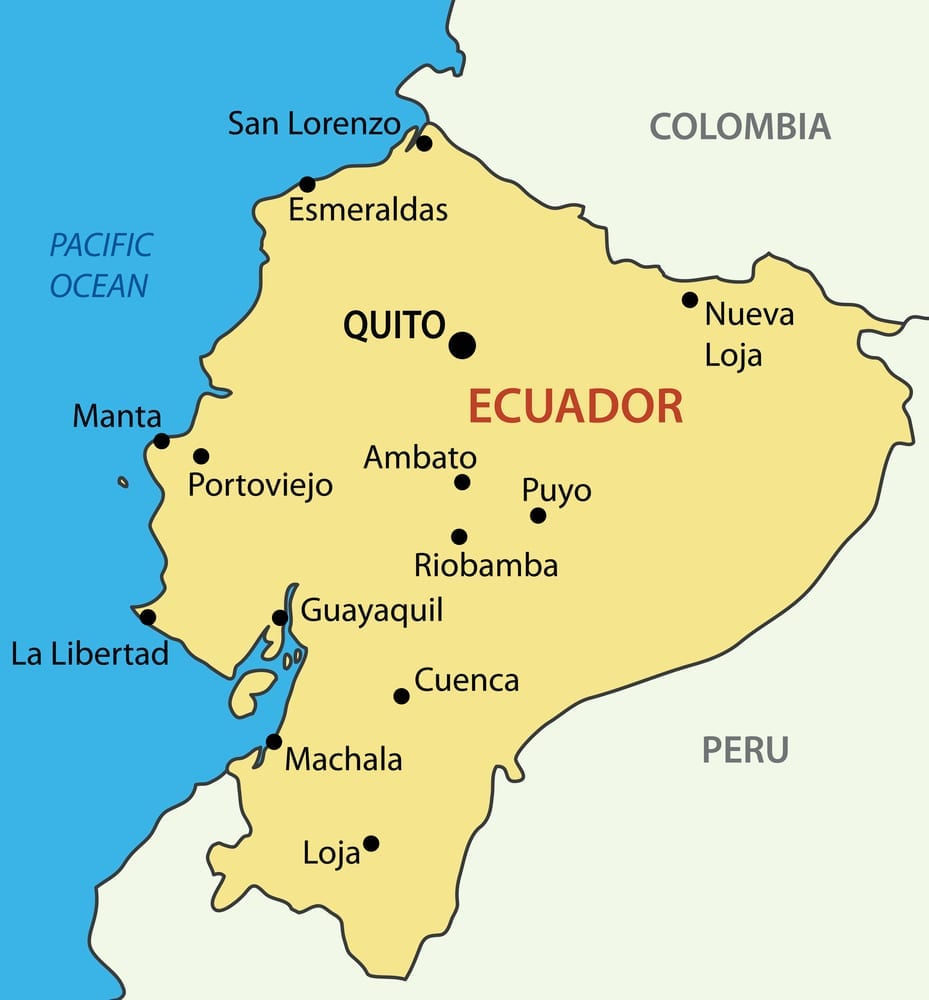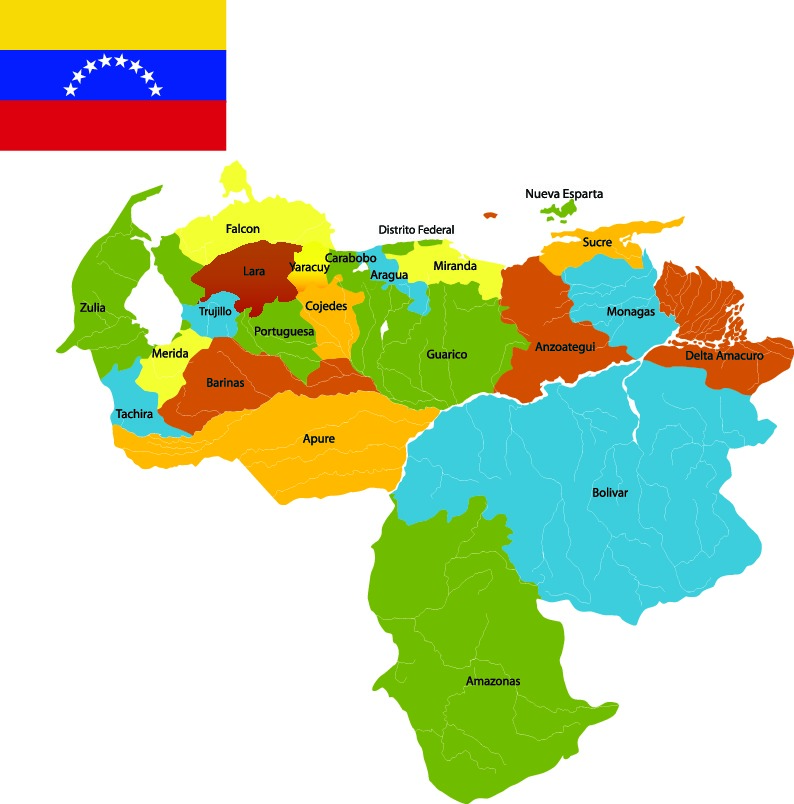
Abstract vector colour Map of Venezuela country
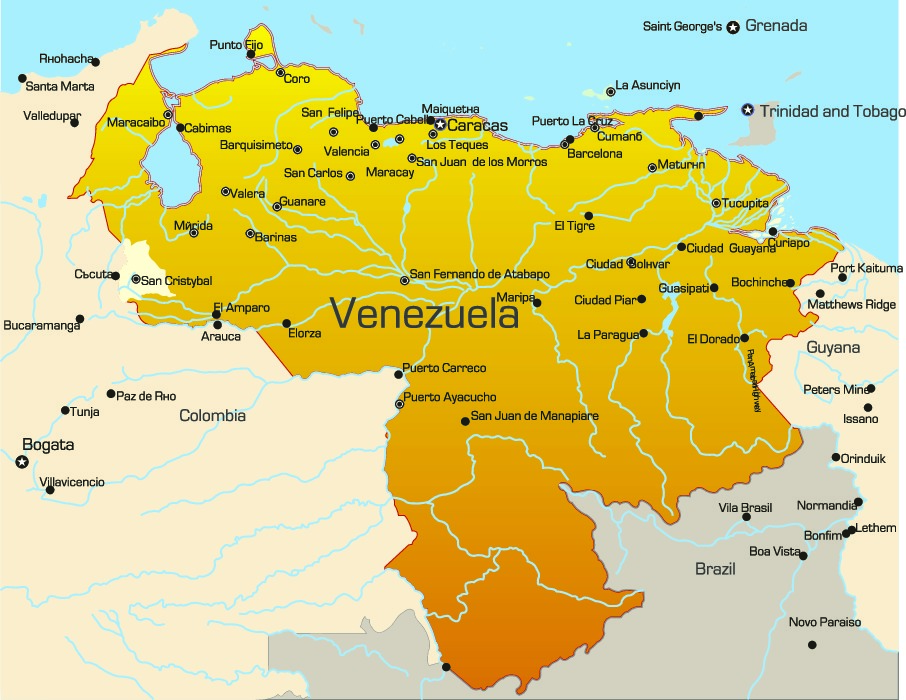
Map of Venezuela linear icon
 Bolivarian Map of Venezuela
Bolivarian Map of Venezuela

Map of Venezuela Administrative divisions
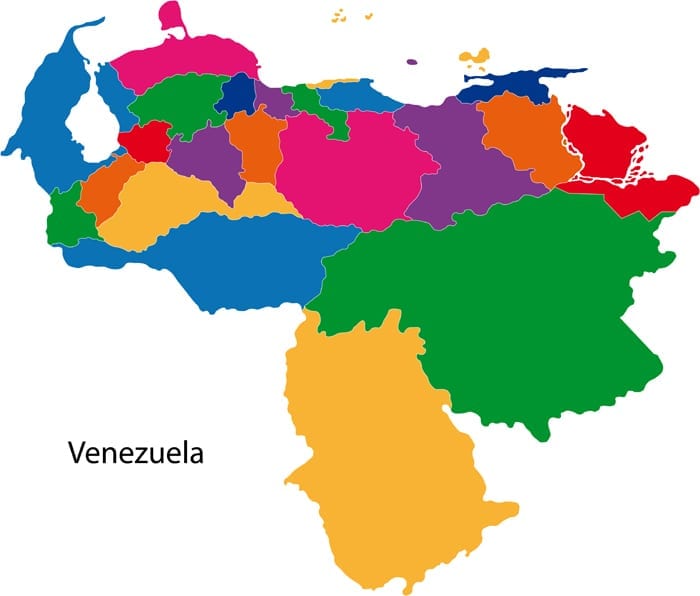
Relief Map of Venezuela – 3D-Rendering
 Venezuela is located in the north of South America. The total area of this country is 912,050 square kilometres while the land area consists of about 882,050 square kilometres. If you have already visited California imagine two times California consolidated together. This is the size of Venezuela. Let’s discover more about the geography of this interesting country.
Venezuela is located in the north of South America. The total area of this country is 912,050 square kilometres while the land area consists of about 882,050 square kilometres. If you have already visited California imagine two times California consolidated together. This is the size of Venezuela. Let’s discover more about the geography of this interesting country.
Geography of Venezuela
If you closely observe the map of Valenzuela, you will understand that it looks like a triangle. People usually visit this place to savour the beauty of the coastline, which is spread for 2800 kilometres. The north part is bounded by the Atlantic Ocean, and the Caribbean Sea while the eastern part holds Guyana. You will find Brazil in the southern part of this country and Columbia sits on the west.
Geographers describe this country according to its well-defined regions. The Northwest part is famous for the Maracaibo lowlands and beautiful mountains. These mountains start from the east-west arc and run through to the border of Colombia and the Caribbean Sea along with Orinoco plains that is based in the central part of Venezuela and ends in the highland of Guiana that is the south-eastern part of this country.
The lowland areas
The lowlands of Maracaibo are quite impressive. It creates a spoon-shaped or an oval shape that is surrounded by different mountain ranges. These mountains are located on the three sides. The fourth side or the northern part of this oval opens to the vast Caribbean. This is basically flat land. If you visit the centre of this region that is far away from the mountain ranges, you will find a gentle slope. The lowland territory is completely dominated by Lago de Maracaibo.
On the other hand, if you visit Lago de Maracaibo’s southern part, you will find it swampy. Could you believe that this part of the region had little population in the year 1990? No one could believe that because it had extraordinary agricultural lands with excellent petroleum deposits.
Andes
We all know that the Andes chain is one of the most popular and beautiful mountain ranges. The north-eastern extension of this mountain range is based on the border of the Caribbean Sea. Geographers have already divided this part into several gaps. You will be amazed to know that the high peaks have already reached over 4500 metres. The beauty of this land is these mountain ranges consist of different fertile valleys.
Population density
The population density within areas of Venezuela depends on agriculture and industry. They love to reside here in developed areas while the westernmost part is considered to be the least populated area. This part is full of serenity, is found along the border of Colombia. If you are a mountain lover, you cannot miss the highest peak that is Pico Bolivar sitting in the south of Lago de Maracaibo. Pico Bolivar has a height of 5007 meters. When it is full of white snow, it creates magic in the environment with its beauty.
The core area of Venezuela is full of valleys, and these beautiful valleys are found between these parallel regions. The small area of this country holds the maximum population with excellent transportation and agricultural activities. This particular area is also separated from the mountains of the easternmost part by another large gap. In this easternmost part, you will find uplands and dissected hills.
All these uplands and hills start from the Caribbean and end in Trinidad.
Orinoco plains
The lowlands are famous for the Orinoco plains. It starts from the Westin part of the Caribbean coast and runs through the border of Colombia. It lies precisely between the Rio Orinoco and the mountains in the north. Orinoco plains have a name called the llanos. This area is surrounded by the highland areas, but elevations in this region never go over 200 metres. Many rivers cut different shallow valleys in the Northern part of the Rio Apure. On the other hand, the south of this region offers flat terrain and low elevations.
Highlands
The highlands of Guiana is quite popular because this is known to be one of South America’s oldest land-forms. Guiana landform is found in Rio Orinoco’s eastern and southern part. People usually get attracted towards the initial formations which are created by erosion in this particular region. Gran Sabana is one of the perfect examples of these unusual formations because of its topological feature. Here you will also find massive bluffs just above the Gran Sabana’s surface. The highest waterfall in this world Angel Falls is also available here.
Climate of Venezuela
Venezuela always offers balmy warm weather because it is located above the equator. You can visit this place anytime in a year because the temperature doesn’t fluctuate much. It always varies between 26 degree Celsius to 28 degree Celsius. While the lowland regions always have a tropical climate, the coastal areas or the Caribbean part is always balmy.
It happens because of the altitude. Whenever you visit the mountain areas or the Andes region, you have to take your winter clothing because these parts are the coolest. You have to keep in mind that the temperature of this mountain region can drop up to 9 degree Celsius.
The rainy season starts from May and lasts till December in Venezuela. The lowland areas get flooded at this time. So you have to be careful before visiting the lowland areas of Andes and Llanos. The dry season is always safe to visit that starts in December and ends in April. The coldest months are January and February while the warmest months are July and August. If you are planning to visit the Andes mountain, you should visit in between October and May before the rain hits the ground. As a visitor, you always have to keep in mind that rain can hit the ground anytime in the dry season.
Venezuela Flag
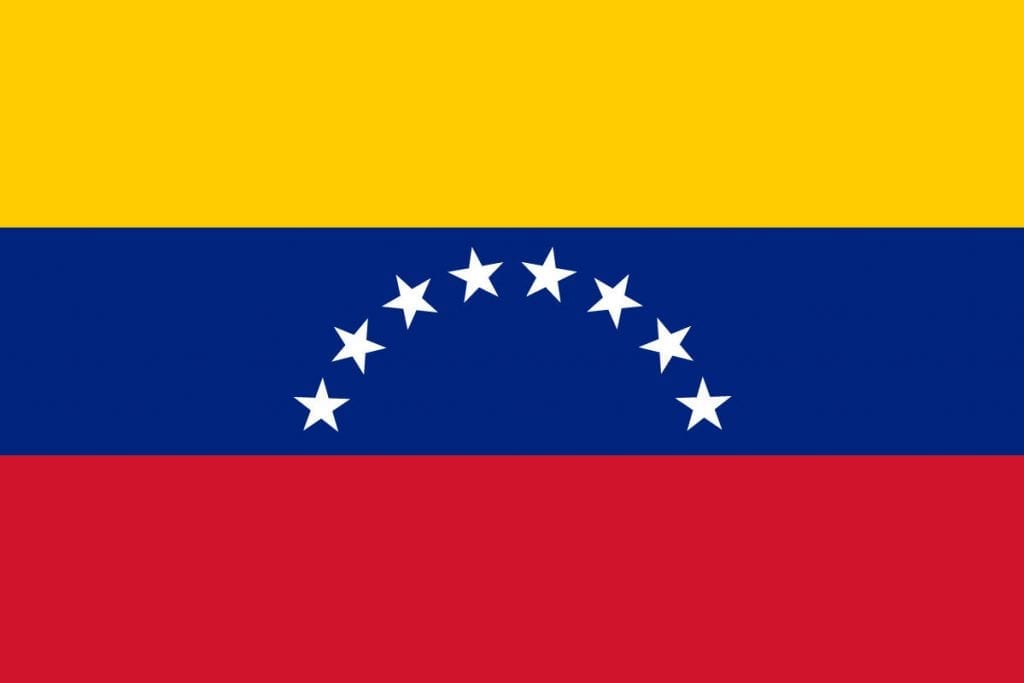 The new Venezuela flag is probably the most youthful flag on the planet, yet there have been a few different flags of Venezuela since it previously won its independence. Venezuela’s new flag is the same as the older designs, which go back to the independence developments that thrived in the Spanish settlements during the 19th century.
The new Venezuela flag is probably the most youthful flag on the planet, yet there have been a few different flags of Venezuela since it previously won its independence. Venezuela’s new flag is the same as the older designs, which go back to the independence developments that thrived in the Spanish settlements during the 19th century.
The present flag of Venezuela was presented in 2006. The fundamental structure incorporates a horizontal tricolor of blue, red and yellow, dating to the first flag displayed in the year 1811, in the Venezuelan War of Independence. Further alterations have included numerous changes to the position and number of stars and incorporation of an optional emblem at the upper-left corner.
History of Venezuela Flag
All the flags of Venezuela follow their heritage back to the standard of Francisco de Miranda, one of the earliest progressive pioneers in the Spanish America. Miranda’s flag was the motivation for a few different flags, which still look to some extent, like the Venezuela flag. Miranda gave two clarifications for the origin of his design regarding the flag.
A letter that he sent to a buddy says that the flag was inspired by an argument that he had with a German scholarly named Goethe. Goethe clarified his hypothesis of essential hues and revealed to Miranda that his predetermination was to carry such a flag to the Spanish provinces. While the journal of Miranda recounts a different story, it says that he was inspired by seeing a military division in Hamburg when he was stopping over the city. In either case, the colours of the flag had been picked by 1801, which was quite a long while before it was first utilised.
Facts behind the Basic Design of the Flag
On March 28 in 1864, the basic design of the flag was determined by the law. Its circular section of the stars symbolises the original provinces. The coat of arms utilised on the flag of military and government specialists includes a white horse; a wheat sheaf; panoply of weapons, tools, and flags; two cornucopias; and the branches of palm and laurel tied with a band.
Miranda’s design shaped the centre of the Venezuelan flag; however it didn’t go unchanged. Venezuela added stars to symbolise the provinces of the country, and the placement of those stars altered a few times throughout the history of the country. Some of the designs of the flags likewise incorporated the coat of arms of the nation, which is approved for use on the modern flag however isn’t mandated. The latest change took place in 2006 when Venezuela supplanted a circle of the stars with the curve of stars that shows up on the existing design of the flag.
Colour and Symbolism of Venezuela Flag
The Venezuela flag is a flat tri-band of blue, red, and yellow that highlights a curve of 8 white stars in the middle. The stars symbolise the regions that makeup Venezuela. There are a few usual versions of the colours of the flag, yet the leading elucidation states that the yellow colour band symbolises to the gold of Venezuelan land, blue colour band signifies to the ocean, and the red colour band symbolises to the blood that was spilled during the war for independence.
Places to visit in Venezuela
Now let’s check out some of the best places to visit in this beautiful Venezuela.
Margarita Island
Are you a beach lover? Then you will surely fall in love with this most sought after destination. Margarita beach is also famous as Isla de Margarita. You’ll encounter this place in the north of this mainland.
People from all over the world usually visit this place to enjoy its soft sand beaches. Many beautiful destinations are founded here, including Playa Guacuco, La Playa, Playa Manzanillo, and Playa Puerto Cruz.
Angel Falls
The Angel is the world’s highest waterfall that drops from 979 meters. This tourist destination is available in the Canaima National Park. Reaching this remote area is a bit difficult. That is why flights are arranged for the tourists. Falls usually disappear or reach the bottom in the dry season. So try to visit this place in the rainy season which starts in May and ends in November. You can begin your journey by sightseeing and after that don’t forget to arrange a boat trip. This trip also offers you every possible accommodation. In short, it will be a luxurious journey that you will remember and cherish forever.
Los Roques
The full name of Los Roques is Los Roques Archipelago. This area is famous for outstanding hotels, beautiful beaches, coral reef and turquoise water. People usually visit this place to enjoy its serenity and to forget the hustle-bustle of the city. The main attraction is Gran Roque. It’s a beautiful village. Apart from that, how can we forget Cayo de Agua? It’s an incredible island, and you can reach this beautiful place by booking a boat to enjoy its turquoise water. Swimmers will fall in love with it.
The Gran Sabana
Canaima National Park is a site of UNESCO’s world heritage. Angel Falls is associated with this beautiful town. It’s basically a small area that includes La Gran Sabana and over a hundred mountains. It’s a unique experience that you shouldn’t miss as a traveller. You have to visit this site in the dry season to enjoy the sunshine and swimming.
Orinoco Delta
This site is available in the Northeast part of Venezuela. It will give you an unusual experience as river Delta offers the best wildlife, including piranhas, monkeys as well as macaws. You can simply hire riverside lodges to stay here. These facilities are always available for travellers, but you have to book in advance to enjoy the whole trip at an affordable price.
Roraima
Roraima is a table topped mountain that offers the best natural beauty for the adventure seekers. Unusual rock formation and surrounding lowlands with waterfalls create magnificent beauty. Have you heard about the “Lost World” a famous Novel? It took its inspiration from the mountain region. This is also one of the best-hiking destinations. So, if you are looking for the best place to explore in Venezuela, you have to include this beautiful site on your list.
Apart from these places, there are many more outstanding sites waiting for you in this beautiful country Venezuela. Don’t miss the chance to explore this breathtaking beauty.
BOOK ACCOMMODATION IN ANY PART OF VENEZUELA AT GREAT PRICES
See Also
MAP AND FLAGS OF COUNTRIES IN SOUTH AMERICA

